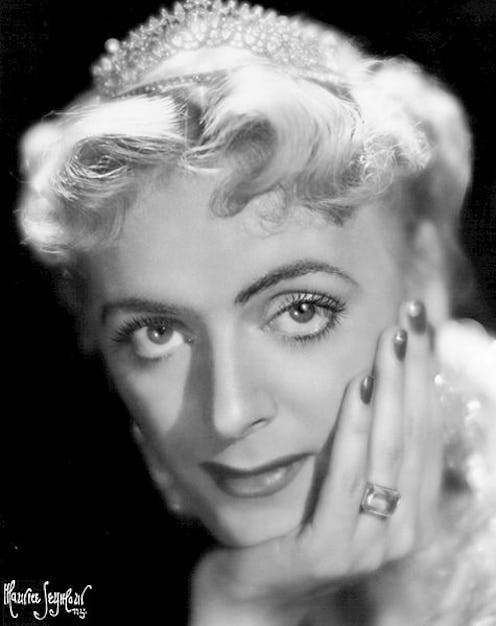Life
4 LGBTQ Heroes From History You Probably Haven't Heard Of
Every day is a good day to take action against bigotry, but today is truly an excellent one: it's the International Day Against Homophobia, Transphobia, and Biphobia, which means it is a great time to make sure everyone in your life understands that anti-LGBTQ discrimination — expressed in everything from unfair laws to hate crimes to hurtful and tasteless jokes — is sadly still alive and well in this world, and we need to fight back. As we battle against homophobic, transphobic, biphobic, and other anti-LGBTQ attitudes in today's society, though, it's also an important to celebrate the trailblazers who got us where we are.
From the groundbreaking 19th century German author who ran lecture tours to educate people about gay rights, to the lesbian historian at the heart of the Harlem Renaissance, there are many people who should be more recognized for their contribution to making this a more tolerant, accepting, loving world.
Let's be under no illusions: things are better than they were in the eras of many of the people below, but they are still not great. The world is still full of anti-LGBTQ bias, whether it involves "religious freedom" laws in the United States, or the reports of state-sanctioned violence and murder of gay men in Chechnya. Transgender people in the U.S. still face huge levels of violence and discrimination, and while the presence of Ellen on our TV screens and the success of Moonlight at the Oscars may convince us that we now live in an equitable society, it's a false belief. Homophobia, biphobia and transphobia aren't just problematic; they're deeply dangerous — which makes the existence of these historic figures, who lived in times even more fraught and threatening for LGBTQ people, even more inspiring.
Karl Heinrich Ulrichs
Ulrichs was extraordinarily open about his homosexuality in a time and place — 19th century Germany — that penalized him deeply for it. Dismissed from his job as a legal advisor in 1857 because of his sexuality, he started to write extensively about theories of homosexuality, and coined the idea of "Uranians" to mean men who loved other men ("homosexuality" as a term would not be used until the late 1870s). He declared himself an "Urning," the German word for "Uranian," in his article “Research on the Riddle of Male-Male Love," published in 1864. (He called women who loved women "Dionings.")
Ulrichs would become one of the first people to publicly advocate for LGBTQ rights when he stood up in front of the Congress of German Jurists in 1867 and called for an end to anti-homosexuality laws. He'd eventually have to go into exile in Italy, but noted late in his life, "I am proud that I found the courage to deal the initial blow to the hydra of public contempt."
Mabel Hampton
"Miss Mabel," as she was called, was a central figure in the Harlem Renaissance of the 20th century, performing as a dancer; but later, she played another vital role in history: as one of the first historians of LGBT experience and protest. Hampton collected a vast amount of historical material that documented what it was like to be queer and alive between the '20s and 1988, when she died. Along with her partner of over 40 years, Lillian Foster, Hampton would work tirelessly for LGBT rights over the decades.
"Throughout the years," Queerty would write in 2012, "Hampton squirreled away hundreds of letters, photos and other items that chronicled African-American and gay life and history, including her own." The collection became one of the bedrocks of the Lesbian Herstory Archives, founded in 1974; Hampton would spend the rest of her life collecting material — from academic publications to pulp novels — to add to it, as well as agitating for lesbian rights.
Christine Jorgensen
It was 1952 when the headline broke on the cover of the New York Daily News: "EX-GI BECOMES BLONDE BEAUTY!" Though former army private Christine Jorgensen was not the first person to have gender confirmation surgery (others, like Lili Elbe, whose story of undergoing gender confirmation surgery in 1930 was portrayed in the film The Danish Girl — and who tragically died from surgical complications — had experienced the procedure before Jorgensen), she became the first person in the U.S. to become widely known for her transition.
And Jorgensen — a glamorous blonde who would immediately capture the public imagination — used the platform that publicity gave her to both educate and entertain. She toured the U.S. giving lectures, gave interviews, wrote books, and appeared on TV to advocate for transgender rights; she also developed a career as a singer and performer.
Jorgensen's impact on our culture is incalculable — as she would tell the media at a reunion with her doctors in the 1960s, "We didn't start the sexual revolution but I think we gave it a good kick in the pants!"
Brenda Howard
One of the most important people in the history of LGBTQ rights, Brenda Howard has been called "the Mother Of Pride," in large part because she organized the first-ever gay rights march, the Liberation Day March, in New York in 1969.
As the Advocate said in 2014, after her death, she was first galvanized towards open activism by the Stonewall riots earlier in the year (as a bisexual woman, she was friends with many of the people who'd been in the bar at the time); she would continue to tirelessly organize protests and political action for the next three decades.
She was a lobbyist and legal activist, and accomplished everything from establishing the first chapter of Alcoholic Anonymous purely for bisexual people to fighting for LGBT rights in New York law — at one point, she was arrested for protesting against the firing of queer women.
Autostraddle called her "the bisexual curmudgeon," and her legacy is one of outrageous strength, passion and resilience — like the LGBTQ rights struggle itself .
